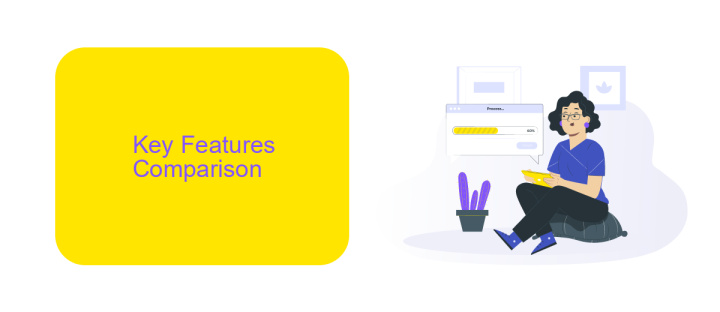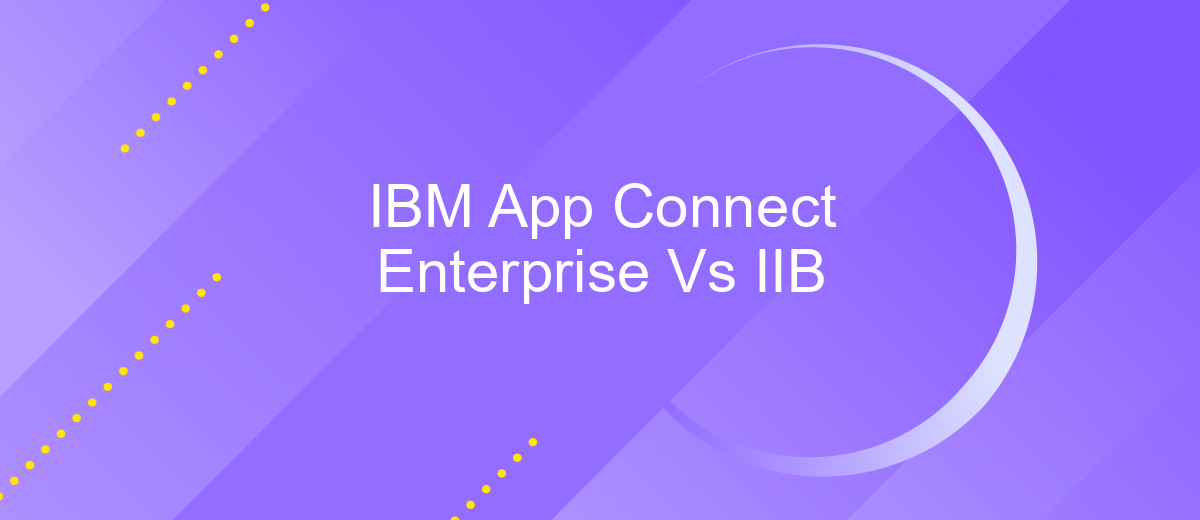IBM App Connect Enterprise Vs IIB
IBM App Connect Enterprise (ACE) and IBM Integration Bus (IIB) are two powerful integration tools that help organizations connect applications and data across diverse environments. While IIB has been a reliable solution for many years, ACE offers enhanced capabilities and modern features. This article compares the two platforms, highlighting their differences, strengths, and suitability for various integration needs.
Overview
IBM App Connect Enterprise (ACE) and IBM Integration Bus (IIB) are both robust integration platforms designed to facilitate seamless communication between various applications and systems. ACE, the successor to IIB, brings enhanced capabilities and performance improvements to the table, making it a preferred choice for modern enterprises.
- Enhanced performance and scalability
- Improved user interface and experience
- Advanced integration capabilities
- Cloud-native deployment options
- Backward compatibility with IIB
For businesses looking to streamline their integration processes, tools like ApiX-Drive can be an invaluable asset. ApiX-Drive simplifies the setup and management of integrations, allowing users to connect various applications and services effortlessly. By leveraging such tools alongside ACE or IIB, organizations can achieve greater efficiency and agility in their operations.
Key Features Comparison

IBM App Connect Enterprise (ACE) and IBM Integration Bus (IIB) both offer robust integration capabilities, but they differ in several key features. ACE provides a more modern and flexible environment with enhanced cloud-native capabilities, making it ideal for hybrid cloud deployments. It supports a wide range of integration patterns and offers improved performance and scalability. Additionally, ACE includes advanced data mapping and transformation tools, which streamline the process of connecting disparate systems.
On the other hand, IIB is known for its stability and reliability in traditional enterprise environments. It offers comprehensive support for a variety of protocols and data formats, ensuring seamless integration across different platforms. While IIB excels in handling complex enterprise integration tasks, ACE’s support for modern APIs and microservices architecture makes it a better choice for contemporary integration needs. For those looking to further simplify their integration setups, services like ApiX-Drive can be considered, as they offer user-friendly tools to automate and manage integrations efficiently.
Architecture

IBM App Connect Enterprise (ACE) and IBM Integration Bus (IIB) share a common architectural foundation, yet they exhibit distinct differences that cater to modern integration needs. ACE, the successor to IIB, introduces enhancements for cloud-native environments and microservices architectures, providing greater flexibility and scalability.
- Integration Nodes: Both ACE and IIB utilize integration nodes to manage message flows, though ACE offers improved performance and easier deployment options.
- Message Flows: Message flows in ACE can be designed using a more intuitive interface, allowing for seamless integration with various applications and data sources.
- Cloud-Native Capabilities: ACE supports containerization and orchestration tools like Kubernetes, making it ideal for hybrid and multi-cloud environments.
Additionally, services like ApiX-Drive can be leveraged to further streamline integration processes. ApiX-Drive offers automated workflows and easy-to-use connectors, enhancing the efficiency of setting up and managing integrations within both ACE and IIB environments. This combination ensures robust, scalable, and efficient integration solutions for diverse business needs.
Usage Scenarios

IBM App Connect Enterprise (ACE) and IBM Integration Bus (IIB) are powerful tools for enterprise integration. Both platforms are designed to connect disparate systems, streamline business processes, and enhance data flow across various applications. However, their usage scenarios can differ based on organizational needs and technological environments.
ACE is ideal for modern cloud-based architectures and microservices, offering flexibility and scalability. It supports hybrid cloud environments, making it suitable for businesses transitioning to cloud-native solutions. On the other hand, IIB is often preferred in traditional on-premise settings, providing robust and reliable integration capabilities for legacy systems.
- Connecting cloud and on-premise applications seamlessly
- Automating data flow between CRM, ERP, and other enterprise systems
- Enabling real-time data processing and analytics
- Facilitating API management and integration through tools like ApiX-Drive
In summary, while both IBM ACE and IIB offer comprehensive integration solutions, the choice between them depends on the specific needs of the organization. Whether it's leveraging the cloud capabilities of ACE or the stability of IIB, businesses can achieve efficient and effective integration tailored to their operational requirements.
Evaluation and Conclusion
In evaluating IBM App Connect Enterprise (ACE) versus IBM Integration Bus (IIB), it is evident that ACE offers a more modern and flexible integration solution. ACE brings enhanced capabilities such as cloud-native deployment options, improved performance, and a more user-friendly interface. These features make ACE particularly suitable for organizations looking to leverage cloud environments and streamline their integration processes, providing a significant advantage over the older IIB platform.
When considering integration services, tools like ApiX-Drive can further enhance the capabilities of ACE by simplifying the setup and management of integrations. ApiX-Drive offers an intuitive platform for connecting various applications and automating workflows, which complements the robust features of ACE. This combination allows businesses to achieve seamless integrations with minimal effort, enhancing overall productivity and operational efficiency. In conclusion, while IIB has served well in the past, ACE, supported by tools like ApiX-Drive, represents the future of enterprise integration solutions.
- Automate the work of an online store or landing
- Empower through integration
- Don't spend money on programmers and integrators
- Save time by automating routine tasks
FAQ
What are the main differences between IBM App Connect Enterprise (ACE) and IBM Integration Bus (IIB)?
Can I migrate my existing IIB integrations to IBM App Connect Enterprise?
What are the licensing differences between IBM App Connect Enterprise and IIB?
How does IBM App Connect Enterprise support cloud-native deployments?
What tools are available for automating and managing integrations in IBM App Connect Enterprise?
Routine tasks take a lot of time from employees? Do they burn out, do not have enough working day for the main duties and important things? Do you understand that the only way out of this situation in modern realities is automation? Try Apix-Drive for free and make sure that the online connector in 5 minutes of setting up integration will remove a significant part of the routine from your life and free up time for you and your employees.


